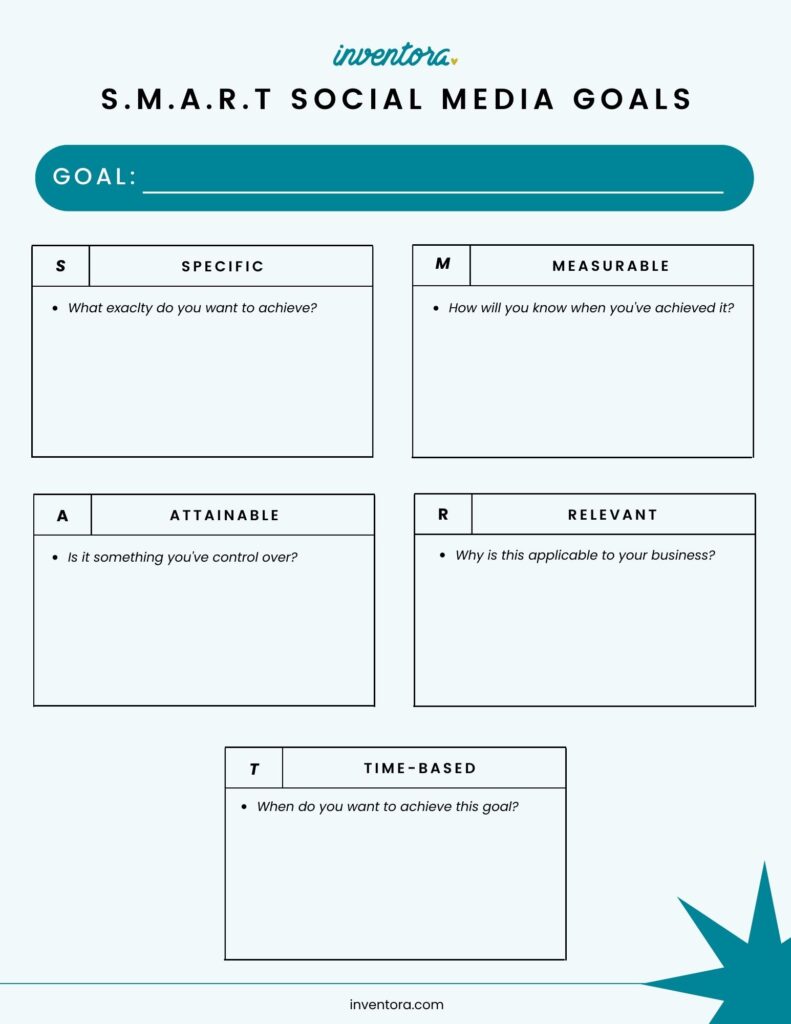
Social media has become an important component of every business’s marketing strategy. It is the one of the only places where users can easily connect with one another from around the world. With social media strategies for small businesses, we are able to share our thoughts, feelings, and experiences with any product or service. Creating a social media strategy can be exciting, yet overwhelming at the same time. Many networks and social channels are available. And in addition, they are constantly adding new features for you to learn and integrate into your business strategy. If you don’t have a full-time team of social media experts at your disposal, this can be even more challenging.
As business owners, we know you understand your success depends on having a sensible and straightforward strategy that fits your resources and goals. We have taken the liberty to create a guide that will help you clearly understand how to develop a social media strategy. Keep reading to further grasp how to develop an online strategy for your business that will drive traffic and quell any overwhelming uncertainties you have about the online social presence of your brand.
What is a Social Media Strategy?

A social media strategy is a road map to determine how to achieve the online goals you have for your business. This strategy can also be an outline for the content that your business will post. Many companies use social media to connect with their customers, provide support, advertise new products and features, and promote special offers.
A social media strategy covers everything from which platforms you’ll use, what to post, and your set content guidelines. It will also include how to engage with the audience, what trackers to be use, and maintenance responsibilities. These are all set in place with the specific purpose to achieve your business’s digital marketing strategy and objectives.
Your social media strategy is your master plan for how you create, post, and engage through your social media content. It involves your social content guidelines, posting cadence, marketing campaigns, creative plans, and engagement strategy that ultimately promotes your business.
Social media strategies for small businesses will be different for every brand. It will depend on your brand’s voice and positioning. As well as your target audience demographics, and social media platform limitations. Keep these factors in mind to help your message reach the right crowd, in the right format.
Why Small Businesses Need a Social Media Strategy

The top three challenges that businesses face with their marketing plan include reaching their audience, measuring ROI, and reaching business goals. Crafting a social media strategy can help you tackle these challenges and do even so much more. Conducting a plan for your business’s online presence will also equip you to set goals, track performance, and tweak benchmarks over time.
Without a starting point, you can’t measure what’s working and how to shift your activity to hit your goals. Here are some of the great benefits you have when you generate a strategy for your social media accounts:
Assistant in Goal Setting
A social media strategy establishes clear expectations and goals for your business’s online marketing efforts. It will provide a blueprint that you can effortlessly follow to keep your marketing consistent, on task, and relevant to your target audience.
Ability to Track Goal Performance
It’s not enough to simply have a goal for your business’s social media marketing; you must also keep track of how you are progressing towards your goals. A social media strategy establishes the key performance indicators for your business. With this information you can analyze specific data to monitor your business’s progress toward it’s goals.
Know When to Tweak Benchmarks
Benchmarking your business’s online strategy will allow you to track social media metrics and analyze how your current performance is compared to industry standards. While viewing this, you can also see how your business performs next to your competitors, and even your past performance. These metrics will allow you to determine what areas need to be improved, and give you a visual for where your strengths are.
Opportunity to Forecast Sales
Social media is a great tool to use for getting a first hand glance at what new products may peak the interest of your audience. Through the option to share pictures, we are able to get a advanced look into what products really excite our customers. If we post a new product that gets a lot of attention, this can help us determine what the sale rate of this product may be. As well as help us set numbers for our inventory and replenishment inventory with this product.
Steps to Creating a Social Media Strategy

Below are our best steps to creating social media strategies for small businesses. Follow along, then download our template at the end to get started
Step 1: Audit Your Current Social Presence
One of the first things that we do when we launch our business, is open a profile on different social media platforms. We typically do this with or without a marketing strategy. This is why auditing your current social presence is the first step to evaluating the varieties of content posts. While also determining how effective or ineffective our current social media profile and presence is. When you perform an audit, make note of how frequently you post and how consistent your posting content is. Along with this, keep a record of how engaging your posts are with your audience.
Did they get a lot of comments? How about shares? Did any one bookmark your post or DM you about it? These are data points you should be aware of and monitor for each piece of content that you post. Note that you’re only able to view this type of data if you make your account a business account, versus a personal account.
The main takeaway from posting brand content is that it should direct your audience back to your website, products, or eCommerce shop. You should create posts that encourage discussion within your community. Add value to your client’s daily social media scroll. Remember that you’re not selling just a product, you are selling an experience and the value behind the items you create.
Step 2: Set S.M.A.R.T. Social Media Goals
Once you review the data from social media activity, the key is to set specific, targeted goals. Your goals should aim towards the type of content you want to share in the future to entice new, potential customers.
To make this process easier, you should use the S.M.A.R.T. technique. This means that you’ll first create a goal that is Specific, Measurable, Achievable, Realistic, and Timely.
Try to follow these guidelines to create goals that you can achieve easily for social media strategies for small businesses. This will help you avoid targets that you are already aware are going to be very difficult to land with the position your business currently is in. You should also dismiss goals that are too generic. These guidelines will help you with that.
Step 3: Focus on a Few Key Social Channels
Small businesses don’t have the bandwidth to establish and sustain a quality social media presence on every single channel. It’s overwhelming to learn the rules of engagement on multiple networks simultaneously. Not to mention, all the new features that are constantly being added. It can be hard to keep up with!
Start small. Remember that realism is the beginning point for any achievement. Research key platforms to learn where your target audience is their spending time. For instance, if your ideal consumers are business professionals, it may be beneficial to post on LinkedIn, rather than Instagram or TikTok. You don’t need to be on all the social media channels. Focus your efforts on building, nurturing, and sustaining a community on the social channels that can help you connect with your focused audience.
Step 4: Develop a Content Strategy
Step 4 is where things can get more creative. Start by determining the number of posts per week that you plan to share on your social media accounts. You should have a general idea of what you intend to post. These ideas will assist you in developing a strong, and worthwhile, company awareness campaign. Consistency is one of the main factors to increase your engagement rate and increase your brand awareness.
You can create a schedule for posting and engagement that allows you to stay on track and helps you post content consistently. Set goals for your posting and engagement frequency. Hold yourself accountable for following your schedule.
Work on developing an engagement playbook that outlines how you will interact with your community. An engagement playbook is one of many tools to creating an effective social media strategy. It helps to clarify the goals and intentions of the online platforms you choose to use. It’s a specific way to link with followers, employees, and even influencers.
Your playbook can be as extensive and detailed as you want for your social media strategies for small businesses. Create standard question-and-answer sessions. This is essentially your F.A.Q., or frequently asked questions to customer questions and queries. Have a backlog of standard responses for businesses interested in collaborating too. This will all help take some pressure off keeping up with inquiries.
It also outlines marketing objectives for you. Maintain a consistent tone for all communication between your brand, other social accounts, marketing professionals, and business managers to obtain a productive social media strategy guide. Similar to the business plan, but specifically for marketing purposes.
Step 5: Track Results and Optimize Your Strategy
Begin by looking at how much traffic your social accounts drive to your website or blog. Social media platforms offer tools to help businesses track analytics. For example, you can use Facebook’s insights page or Instagram’s account analytics to see what people are responding to. Look for trends related to particular topics and keywords that generate more interest than others. Once you get the idea of your average traffic and post performance, set goals for key metrics. Keep a scorecard to measure your progress.
Choose metrics that are easy to gather, because if it’s too time-consuming to track, you aren’t going to do it. Examples of simple metrics include net new followers, number of interactions per post, and visits to your website triggered by socials.
Social media won’t start working overnight. Establishing a following, stabilizing your brand, and seeing the results of your efforts takes time. Therefore, work on experimenting to find the right combination of channels, content, and messaging that works for your audience.
Over time, you’ll be able to adjust your content based on the information you’re gathering, which will help you fine-tune your social media strategy template and generate more consistent results.
Concluding Remarks
Social media can make you feel overwhelmed. That is a statement we can all agree on. The feeling is hard to fully avoid, but you can definitely diminish it by using our tips in the guide we’ve proved below. Remember that the key is to put your efforts in the correct social media channels for your business. Prioritize your audience, be consistent, and track your results. We are sure you will see results and traffic in no time!

To receive more educational business tips and documents, subscribe to our newsletter below! By subscribing, you’ll also get exclusive invites to online webinars, special promotions, offers, and more! To get started streamlining your business today, sign up for our free hobby plan here. Or, unlock all of Inventora’s features with our affordable business plan. Let us know in the comments how you plan to get started with your 2023 social media business strategy!


